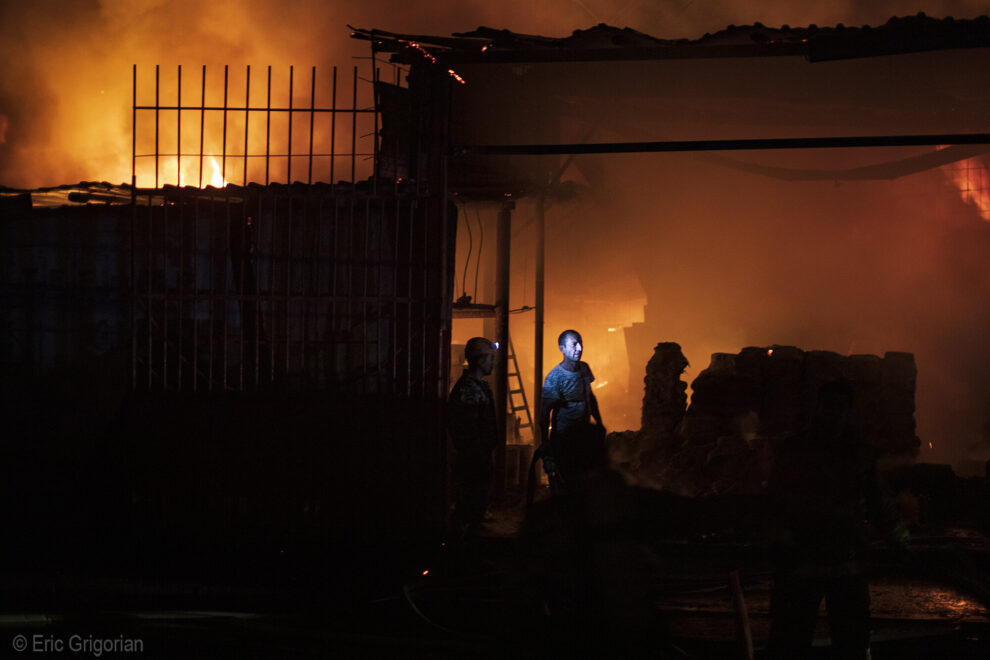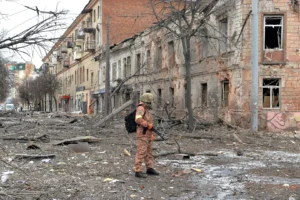An explosion at a fuel depot in Nagorno-Karabakh has killed 20 people and injured hundreds more, local Armenian authorities say.
Nearly 300 people were admitted to hospitals, with dozens of them “still in critical condition”.
It comes as the Armenian government said 13,350 refugees had crossed into the country from the enclave.
The disputed region in Azerbaijan is home to a majority of some 120,000 ethnic Armenians.
It is not yet clear what caused the explosion on Monday evening near the main city of Khankendi, known as Stepanakert by Armenians.
Petrol stations were overwhelmed as thousands tried to leave the region, which was already suffering from a fuel shortage following a months-long blockade.
In a statement on Tuesday, local officials said 13 unidentified bodies were found at the scene of the explosion and seven more died in hospital.
They said doctors were working in “difficult and cramped conditions” to save lives and treat 290 patients with various degrees of burns.
Human Rights Ombudsman Gegham Stepanyan wrote on social media: “The health condition of the majority is severe or extremely severe. The medical capacities of Nagorno-Karabakh are not enough.”
The Armenian health ministry said it was sending helicopters to evacuate patients from the region’s strained hospitals. Azerbaijan also said it had sent medical supplies.
Since Azerbaijan’s seizure of Nagorno-Karabakh last week, thousands of people have left the area after the Armenian government in Yerevan announced plans to move those made homeless by the fighting.
Armenia’s Prime Minister Nikol Pashinyan has said that ethnic cleansing is “under way” in the region.
“That’s happening just now, and that is [a] very unfortunate fact, because we were trying to urge international community on that,” Nikol Pashinyan told reporters.
But Azerbaijan has said it wants to re-integrate the ethnic Armenians as “equal citizens”.
The head of the US Agency for International Development, Samantha Power, called on Azerbaijan “to maintain the ceasefire and take concrete steps to protect the rights of civilians in Nagorno-Karabakh”.
The BBC has spoken to some of the refugees who arrived in the city of Goris in Armenia on Sunday, close to the border to Karabakh.
“I gave my whole life to my homeland,” said one man. “It would be better if they killed me than this.”
A woman, Veronica, told the BBC that this was the second time she had become a refugee. The first time was during the conflict in 2020.
The only road connecting Armenia to the enclave remains backed up with hundreds of cars and buses, filled with ethnic Armenians trying to leave.
Envoys from Armenia and Azerbaijan are due to meet in Brussels on Tuesday for European Union-backed talks.
It will be the first time diplomatic talks have been held between the two countries since Azerbaijan seized the enclave last week.
The two sides will be represented by their national security advisors.
Azerbaijan has also started negotiations with Karabakh’s ethnic-Armenian authorities about the region’s future.
Nagorno-Karabakh – a mountainous region in the South Caucasus – is recognised internationally as part of Azerbaijan, but has been controlled by ethnic Armenians for three decades.
The enclave has been supported by Armenia – but also by its ally, Russia, which has had a peacekeeping mission there for the past three years.
Five Russian peacekeepers were killed – alongside at least 200 ethnic Armenians and dozens of Azerbaijani soldiers – as Azerbaijan’s army swept in last week.
On Sunday, Azerbaijan’s defence ministry said it had confiscated more military equipment, including a large number of rockets, artillery shells, mines and ammunition.
Despite Azerbaijan’s public reassurances, there are fears about the residents of Nagorno-Karabakh, with only one aid delivery of 70 tonnes of food having been allowed through since separatists accepted a ceasefire and agreed to disarm.
Azerbaijan announced that another aid convoy, with 40 tonnes of flour and badly-needed hygiene products, was on its way to the enclave.
Ethnic Armenian leaders say thousands are without food or shelter and sleeping in basements, school buildings or outside.
Armenia-Azerbaijan: Nagorno-Karabakh map

Source : BBC












Add Comment